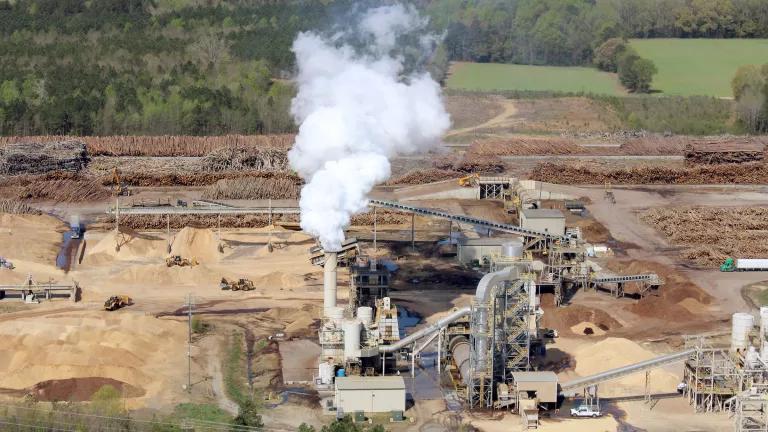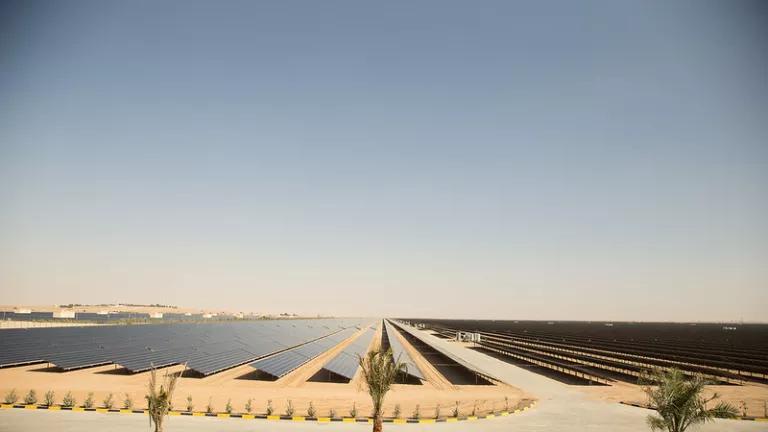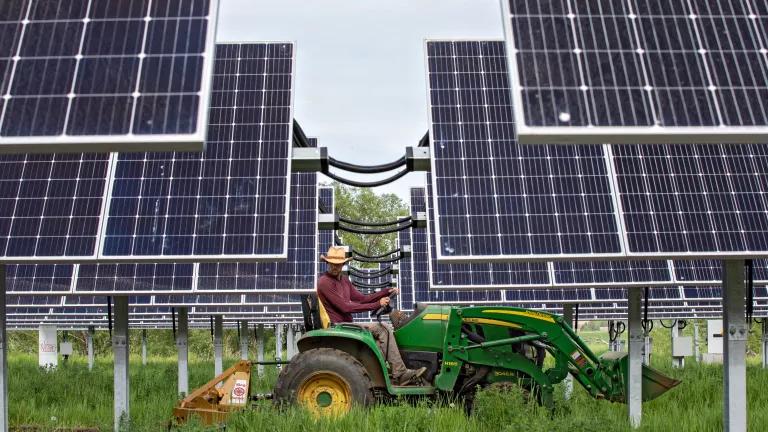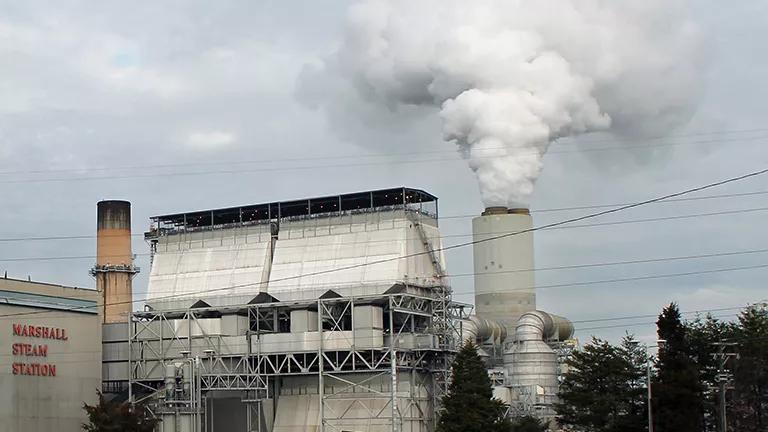House Climate Crisis Action Plan Gets a Lot Right on Biomass
Established science now shows that burning biomass from forests for electricity is not a climate solution within timeframes relevant to addressing climate change. The Select Committee’s plan recognizes this science and squarely positions its policies in contrast to those of the Trump administration and pro-biomass members of Congress. Foremost, it establishes that not all biomass energy projects are carbon neutral.

An Enviva biomass facility in Northampton County, North Carolina
Dogwood Alliance
The House of Representatives’ Special Select Committee on the Climate Crisis has finally released its roadmap, which seeks to put the United States on a path to net-zero carbon emissions by midcentury. The long-awaited plan emphasizes big solutions to decarbonizing our economy like investing in energy efficiency, renewables and electrification, and centers core pillars of justice, equity, and high-quality jobs for all. Another place where the report gets a lot right is on biomass energy.
Biomass refers to the use of any plant or organic matter to produce energy. Too often, in places that have incentivized biomass use to generate electricity like the European Union, biomass is incentivized to generate electricity in dedicated power plants, or old coal plants converted to run partially or fully on biomass. The fuel demand of these plants is so large that the only source of biomass supply big enough to meet is, unfortunately, wood from forests.
Established science now shows that burning biomass from forests for electricity is not a climate solution within timeframes relevant to addressing climate change. Here in the US, it’s therefore critical that federal climate plans do not repeat the same mistakes as the E.U. in adopting flawed policies based on the debunked assumption of biomass “carbon neutrality.”
The Select Committee’s plan recognizes this science and squarely positions its policies in contrast to those of the Trump administration and pro-biomass members of Congress. Foremost, it establishes that not all biomass energy projects are carbon neutral. And it insists that utilizing a rigorous, science-based method to tell the difference between biomass energy systems that result in more vs. less climate pollution is key to defining what, if any, role biomass has in meeting U.S. climate targets.
The plans states that the impacts of any biomass system are variable and based on several factors:
“Depending on the source of biomass, the methods of converting it into energy, and the time horizon considered, the climate impacts of biomass can vary, and burning woody biomass is not always carbon neutral.”
This finding is key given recent wrongheaded congressional efforts to legislate the carbon neutrality of biomass.
The committee’s report goes on to recommend that Congress should invest in “accurately accounting for the climate impacts of biomass,” expressly rebuffing ongoing congressional efforts to do away with science-based bioenergy assessments. It specifically states that any research into biomass carbon accounting should require methods that accurately determine the “additionality” of biomass use. This is technical jargon, but its meaning is straightforward: any assessment of the climate impacts of a biomass system must be compared to a business-as-usual baseline absent that bioenergy production. In other words, a power plant must account for lost carbon sequestration in the forest had the harvested trees been left standing.
Critically, the Select Committee comes down firmly on the side of scientific consensus and science-driven policymaking on another key issue when it comes to the debate around the climate impacts of biomass:
It emphasizes that “analysis of negative and positive emissions in a time frame relevant to what the IPCC identified for meeting the atmospheric carbon reductions needed to limit global warming to 1.5°C” [emphasis mine].
In 2018, when the Intergovernmental Panel on Climate Change put out its report describing the climate action necessary to keep global temperatures from rising beyond 1.5 degrees Celsius, it explained that countries would have to cut their CO2 emissions, such as from power plants, to net zero by around 2050. To reach that goal, it said, CO2 emissions would have to start dropping "well before 2030" and be on track to fall by roughly 45% by around 2030. Scientists are clear that what we do over the next decade is incredibly consequential in this fight.
That is why the timeframe used to evaluate the climate impacts of biomass systems is so critical. Evaluate the carbon impacts of biomass-burning over a long enough timeframe, and it may look good. Eventually, if new trees are replanted, they can suck up the carbon that was emitted when older trees were harvested and burned as fuel for energy production. But trees take many decades to grow back. In the meantime, biomass electricity actually loads the atmosphere with more CO2 than fossil fuels (because wood is a less energy dense fuel, so more of it needs to be burned to generate the same amount of electricity).
Biomass systems where emissions reductions are contemporaneous, such as those that burn genuine industrial wastes that would otherwise be burned without energy recovery can be treated as low-carbon from a climate perspective (though many do emit dangerous air pollutants). But no technology that pumps more carbon into the atmosphere over the next decade or more (or degrades forest carbon sinks, a critical tool is actively sucking carbon out of the atmosphere) should be promoted as a climate solution.
In Europe, because of the categorical treatment of all biomass as “carbon neutral,” entire power plants now run on wood, often imported from forests overseas – and perversely receive billions in subsidies to do so under the guise of promoting renewable energy and addressing climate change. The forests of the U.S. Southeast – some of the most biodiverse and ecological valuable in the world—are ground zero for biomass sourcing.
Not only is fueling power plants with wood harmful to the climate, but it also threatens the wildlife and communities that depend on intact forests for a host of things, like habitat and flood protection. The Select Committee recognizes these impacts as well, stating: “In addition to understanding the climate impacts of biomass, Congress should also consider the effects biomass has on the biodiversity crisis. In some cases, biomass harvesting may negatively affect wildlife habitat and ecosystem health.”
Burning biomass also emits air pollution that causes an array of health harms, from asthma attacks to cancer to heart attacks, resulting in emergency room visits, hospitalizations and premature deaths. Wood pellet production likewise releases unsafe air pollution, at times at levels that violate plant permits and U.S. law. This pollution threatens surrounding communities, which are too often communities of color and low-income communities. This is one place where the Select Committee’s plan could have more specifically drawn a link between avoiding biomass systems that damage the climate and environmental justice.
A prime example are the communities of North Carolina that have already borne and continue to bear the disproportionate consequences of unchecked expansion of wood pellet facilities in the state. Since 2010, the wood pellet biomass industry has expanded dramatically. Wood pellet production facilities in North Carolina, are all located in environmental justice-designated communities. These communities suffer three-fold from wood pellet production. First, as wood pellet plants source within a 50-100 mile radius, the communities experience higher rates of tree loss leading to lower air and water quality and increased risk of flooding. Second, wood pellet production plants have skirted Clean Air Act requirements, freely emitting dangerous pollutants into the communities. And finally, these communities sit in the coastal plain of Southern states and are under direct threat from climate change to which wood pellet production and consumption contribute.
Overall, however, the Select Committee deserves kudos for following the science on some of the central issues surrounding biomass use for energy. Its plan rightly points in the direction of a conscribed role, if any, for biomass-burning in the U.S. power sector.



